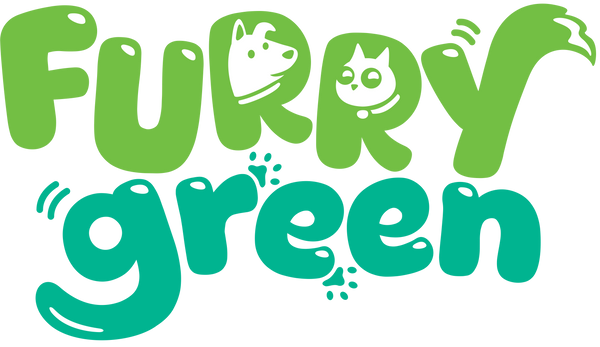
5 Common Oral Health Problems in Dogs (And How to Prevent Them)
Share
A Pet Parent's Guide to Canine Dental Health: 5 Common Issues
Key Takeaways
Key Takeaways TLDR:
- Over 80% of adult dogs develop dental disease by age three, making prevention crucial.
- Daily brushing combined with fresh, moisture-rich diets provides the best protection against tartar and periodontal disease.
- Monthly mouth examinations help catch problems like tumors or fractures before they become serious health issues.
Did you know that over 80% of adult dogs develop dental disease by age three? Your furry friend might not tell you they're hurting, but bad breath, excessive drooling, or avoiding hard food can signal trouble.
Let's examine the most common oral health issues affecting dogs and discover how proper care and nutrition can keep your pup's teeth healthy.
1️⃣ Tartar

Tartar develops when food particles and bacteria combine to form hardened plaque on your dog's teeth. Once saliva mineralizes this plaque, it becomes stubborn tartar that sticks firmly to tooth surfaces.
This buildup creates the perfect environment for harmful bacteria, leading to bad breath and gum inflammation. Left untreated, tartar progresses to serious periodontal disease.
Prevention Tips:
- Daily brushing is the best prevention.
- Dental chews help, but cannot replace brushing.
-
Diet matters too!
Highly processed or sugary kibbles promote bacterial growth, while fresh or gently cooked foods rich in protein, fiber, and moisture stimulate saliva and reduce plaque buildup.

2️⃣ Periodontal Disease
Periodontal disease begins as gingivitis—simple gum inflammation that causes redness and swelling. Without intervention, bacteria penetrate deeper into gum tissues, potentially causing tooth loss.
Early Signs: Bad breath, red gums, bleeding when brushing.
Advanced Signs: Pain, drooling, difficulty eating, pus discharge.
Prevention:
- Annual dental cleaning and vet exams.
-
Diet can slow disease progression.
Nutrition significantly impacts disease progression. Fresh diets containing antioxidants like vitamins C and E help reduce oral inflammation and support gum health.
3️⃣ Oral Tumors
Oral tumors range from benign gum overgrowths to serious cancers like melanoma or squamous cell carcinoma. Older dogs and certain purebred lines face higher risks.
Watch for these warning signs:
- Unusually strong mouth odor
- Blood-tinged drool
- Difficulty swallowing or favoring one side while chewing
- Unexplained nosebleeds or jaw swelling
Monthly Mouth Checks
Examine your dog's mouth monthly, looking for unusual growths or changes. A diet rich in antioxidants and phytonutrients supports immune function and cellular health, potentially reducing cancer risks.
4️⃣ Fractured Teeth
Dogs love to chew, but hard bones, antlers, or extremely firm toys can crack or break teeth. Fractured teeth expose sensitive inner pulp, causing significant pain and requiring veterinary treatment.
Prevention:
- Use moderately firm chew toys.
- Avoid giving hard bones.
- Seek veterinary care if a tooth breaks.
5️⃣ Malocclusion
Jaw or tooth misalignment can be inherited or develop due to structural problems. Poor alignment makes eating difficult and creates hard-to-clean areas where plaque accumulates rapidly.
Management:
- Regular oral exams in puppies.
- Orthodontic correction if needed.
- For brachycephalic (short-nosed) breeds, extra dental care is essential.
🍖 Diet & Oral Health Connection
Research clearly shows diet's major impact on canine oral health. While dry kibble provides some mechanical cleaning action, high-carbohydrate or sugar-laden formulas can actually worsen plaque accumulation.
Fresh or gently cooked pet foods offer these benefits:
✅ Natural enzymes & antioxidants to reduce inflammation
✅ High moisture for better saliva flow & self-cleaning
✅ Free from artificial additives that promote plaque
✅ Strengthen immunity & oral tissue resilience
💡 Note: Diet supports oral health—but brushing and professional dental care remain essential.
Furry Green's gently-cooked recipes provide these oral health benefits while delivering complete nutrition your dog craves. Our fresh ingredients and balanced formulations support not just dental health, but overall wellness.
Ready to boost your dog's oral health with better nutrition?
Explore Our Gently-Cooked Recipes💡 Final Thoughts
A healthy mouth = a healthy body.
Dental disease doesn’t just cause bad breath—it can affect the heart, kidneys, and overall well-being.
Start today: daily brushing, regular vet checks, and balanced nutrition will keep your dog’s smile bright for years to come! 🐶✨
Frequently Asked Questions
How often should I brush my dog's teeth?
For optimal dental health and to prevent tartar buildup, you should brush your dog's teeth daily. It is the single most effective way to maintain oral hygiene and prevent periodontal disease.
Can diet alone prevent dental disease in dogs?
No, diet alone cannot prevent dental disease. While a fresh, moisture-rich diet can significantly support oral health by reducing plaque and inflammation, it does not replace the need for regular brushing and professional veterinary dental cleanings.
What are the early signs of periodontal disease in dogs?
The earliest signs of periodontal disease (gingivitis) include persistent bad breath (halitosis), red or swollen gums, and minor bleeding when you brush their teeth or when they chew on toys.
📚 References
Harvey, C. E., & Emily, P. P. (1993). Small Animal Dentistry. Mosby.
Niemiec, B. A. (2020). Veterinary Periodontology. John Wiley & Sons.
American Veterinary Dental College (AVDC). (2024). Periodontal Disease in Dogs and Cats. Retrieved from https://avdc.org/periodontal-disease/
eClinPath. (2024). Oral cavity. Cornell University College of Veterinary Medicine. Retrieved from https://eclinpath.com/anatomic-pathology/oral-cavity/
Hale, F. A. (2003). Periodontal disease in dogs: A review of the literature. Journal of Veterinary Dentistry, 20(4), 186–195.
Case, L. P., Daristotle, L., Hayek, M. G., & Raasch, M. F. (2011). Canine and Feline Nutrition: A Resource for Companion Animal Professionals (3rd ed.). Mosby Elsevier.
Roudebush, P., Logan, E., & Hale, F. A. (2005). Evidence-based veterinary dentistry: A systematic review of home dental hygiene in dogs and cats. Journal of Veterinary Dentistry, 22(1), 6–15.
Hand, M. S., Thatcher, C. D., Remillard, R. L., Roudebush, P., & Novotny, B. J. (2010). Small Animal Clinical Nutrition (5th ed.). Mark Morris Institute.
Freeman, L. M., Becvarova, I., Cave, N. J., et al. (2021). WSAVA Global Nutrition Toolkit and Guidelines. Journal of Small Animal Practice, 62(9), 543–561.
